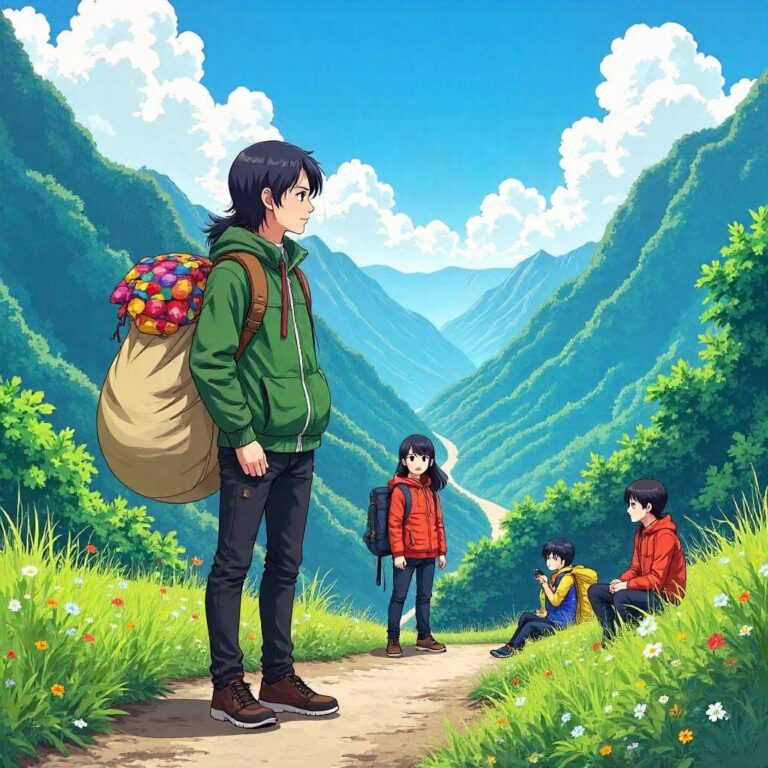Exploring Owakudani: A Hidden Gem in July
Japan is renowned for its stunning landscapes, intricate culture, and vibrant cities. While many travelers flock to the bustling streets of Tokyo or the serene temples of Kyoto, there are hidden gems waiting
for those who venture off the beaten path. One such destination is Owakudani, a volcanic valley in Hakone, known for its bubbling sulfuric hot springs and dramatic views of Mt. Fuji. This guide will help you plan an authentic and enjoyable visit to Owakudani in July, a month that sees a decrease in crowds, making it an ideal time for exploration.
Practical Logistics
Getting to Owakudani
Owakudani is located in Hakone, a popular onsen (hot spring) town situated about 80 kilometers southwest of Tokyo. The journey involves a combination of train and cable car travel: 1. From Tokyo to Hakone: – Take the Odakyu Limited Express Romancecar from Shinjuku Station to Hakone-Yumoto Station. The journey takes about 85 minutes and costs approximately 2,280 yen (one way). – Alternatively, you can take the JR Tokaido Shinkansen to Odawara Station and then transfer to the Hakone Tozan Railway to Hakone-Yumoto. 2. From Hakone-Yumoto to Owakudani: – From Hakone-Yumoto, take the Hakone Tozan Railway to Gora Station (about 30 minutes, 400 yen). – At Gora Station, transfer to the Hakone Cable Car, which will take you directly to Owakudani in about 10 minutes. 3. Cost Breakdown: – Odakyu Limited Express: 2,280 yen – Hakone Tozan Railway: 400 yen – Hakone Cable Car: 1,100 yen (round trip) – Total: Approximately 4,780 yen one way from Tokyo to Owakudani.
Getting Around Owakudani
Once you arrive at Owakudani, the area is quite compact, making it easy to explore on foot. However, be prepared for some steep paths and stairs. Wear comfortable shoes, as you will want to explore the many trails and viewpoints.
Cultural Insights
Visiting Owakudani is not just about witnessing nature; it’s also an opportunity to engage with Japan’s rich cultural heritage. The valley is home to several unique experiences: – Kuro Tamago (Black Eggs): One of Owakudani’s most famous attractions is the black eggs boiled in the hot springs. The eggs turn black due to the sulfur in the water and are said to extend your life by seven years for each egg eaten. Don’t miss this culinary experience! – Onsen Culture: Owakudani is a great place to learn about Japan’s onsen culture. While there are no public baths directly in Owakudani, the nearby onsens in Hakone offer a chance to relax after a day of exploration. – Volcanic Activity: Owakudani is an active volcanic area, and you’ll see steam rising from the ground and hear the gentle rumbling of the earth. Take advantage of this unique geology by visiting the educational exhibits provided by the Hakone Ropeway.
Insider Tips
– Visit Early: To make the most of your trip and beat potential crowds, arrive early in the morning. This will also give you a better chance of seeing Mt. Fuji on clear days. – Check the Weather: July can be rainy in Japan, so check the forecast before your trip. If rainfall is predicted, consider bringing a lightweight rain jacket or umbrella. – Plan for Lunch: The Owakudani area has limited dining options. Pack a bento box or snack from Hakone-Yumoto to enjoy with a view, or try the local specialty of black eggs.
Budget Considerations
Japan can be an expensive destination, but with some budgeting tips, you can enjoy Owakudani without breaking the bank: – Transport Passes: The Hakone Free Pass offers unlimited transportation on the Hakone area transport network, including the cable cars and buses. It costs approximately 5,000 yen for two days and can save you money if you plan to explore multiple locations. – Dining: Eating out can range from budget-friendly options (around 1,000 yen for a meal) to high-end dining (4,000 yen and upwards). Look for set meals (teishoku) for a good balance of price and quality. – Activities: While the natural beauty is free to enjoy, some attractions and experiences may charge fees. Factor in around 1,000 yen for entrance fees at various sites.
Timing Recommendations
July in Japan is characterized by warm temperatures, but it is also the start of the rainy season (tsuyu) which runs from June to mid-July. Here are some timing recommendations: – Best Time to Visit: Early July is generally less crowded, especially in the first half of the month. Late July may see more tourists as families begin their summer vacations. – Weather Awareness: Be prepared for humidity and possible rain. Average temperatures in Hakone hover around 25°C (77°F), so pack accordingly. – Festivals: Consider timing your visit to coincide with local festivals, such as the Hakone Daimonji Fire Festival in late July, where you can experience traditional music, food, and fireworks.
Alternative Options
If Owakudani does not fit into your travel plans or if you seek additional experiences, consider these alternative options: – Hakone Shrine: Located near Lake Ashi, the shrine provides a serene atmosphere and stunning views, especially with the iconic torii gate on the waterfront. – Gora Park: A beautiful park with a tea house and stunning views of the surrounding mountains. It’s perfect for a leisurely stroll and a chance to enjoy the local tea culture. – Lake Ashi: Take a pirate ship cruise across the lake, where you can enjoy views of Mt. Fuji and the surrounding landscapes. The boat ride is a scenic way to appreciate this area.
Step-by-Step Planning Advice
To ensure a seamless trip to Owakudani, follow these steps: 1. Set Your Dates: Choose a timeframe in early to mid-July to take advantage of fewer tourists. Check the local weather forecast for potential rain. 2. Book Transportation: Purchase your train tickets in advance if possible, especially for the Limited Express. Consider getting a Hakone Free Pass for convenience. 3. Reserve Accommodation: Look for ryokan (traditional inns) or hotels in Hakone. Booking in advance is advisable, especially during the summer peak season. 4. Plan Your Itinerary: Create a rough schedule for your day. Make sure to include time for travel, exploring Owakudani, and other nearby attractions. 5. Pack Smart: Bring comfortable walking shoes, a light jacket, a small umbrella, and sunscreen. Don’t forget your camera for the breathtaking views! 6. Arrive Early: Aim to arrive at Hakone-Yumoto Station by 8 AM to maximize your time in Owakudani and potentially beat larger crowds. 7. Enjoy the Experience: Be flexible with your plans to allow for unexpected discoveries. Interact with locals and don’t hesitate to ask questions.
Personal Experiences and Common Mistakes to Avoid
Having visited Owakudani numerous times, I’ve cherished the tranquil beauty and the unique experience of boiling eggs in hot spring waters. Here are some insights and mistakes I’ve seen travelers make: – Common Mistake: Underestimating the weather. The temperature shifts can be significant, so it’s essential to dress in layers. – Hidden Gem: Look for lesser-known viewing spots along the trails that offer different perspectives of Mt. Fuji. Many overlook these areas, but they provide stunning photo opportunities. – Local Secret: Engage with the staff at the local shops; they often have recommendations for hidden trails or sites that are not in the guidebooks. – Don’t Rush: Take your time to soak in the atmosphere. The stunning landscapes and geothermal activity deserve to be appreciated at a leisurely pace.
Conclusion
Visiting Owakudani in July is a fantastic opportunity to enjoy stunning scenery, rich culture, and an authentic Japanese experience without the typical summer crowds. With careful planning and a sense of adventure, your trip can be filled with memorable moments, delightful surprises, and an appreciation for Japan’s breathtaking topography. Don’t forget to indulge in some Kuro Tamago and take a moment to reflect on the beauty of the volcanic landscape around you. Happy travels!



